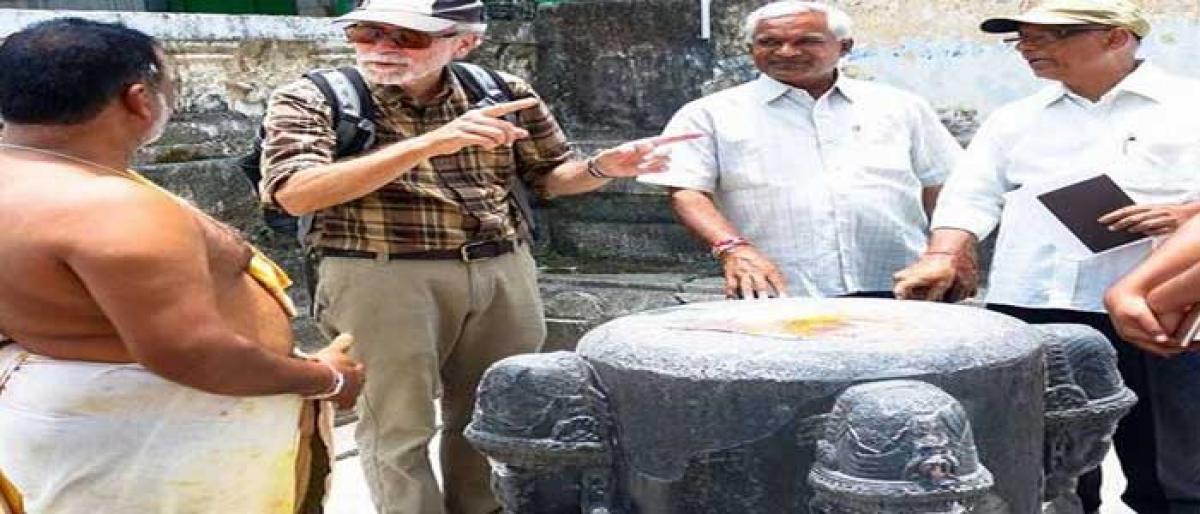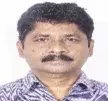Live
- BJP MP candidate Bharat Prasad visited the student who tried to commit suicide
- PM’s popularity in the fast lane: Autos with 'Har Dil Mein Modi' slogan spotted across Delhi
- Delhi-based political parties are like East India Company: Sukhbir Badal
- Golf: Diksha moves into Top-20 at South African Women’s Open
- KCR lashes out against BJP and Congress for destroying Telangana
- Dairy Science students visited the Milk cooling plant
- Moody feels Pant ahead in keepers’ race for T20 WC squad; Srikkanth picks Rahul over Samson as reserve keeper
- Thanking voters for extending 'unparalleled support' to NDA, PM Modi says second phase 'too good'
- Natural Relief for Menstrual Cramps: Beetroot Juice Recipe
- Asha Worker died in a road accident
Just In

Constructing the remnants of Kakatiya sculpture and architectural property strewn all over Warangal Fort to their original position is no less intriguing than that of fiction novels The Da Vinci Code and Angels & Demons etc. written by American author Dan Brown. Professor Phillip B. Wagoner is what Robert Langdon, a fictional character of these novels, is to Dan Brown’s series of books that figure
Warangal: Constructing the remnants of Kakatiya sculpture and architectural property strewn all over Warangal Fort to their original position is no less intriguing than that of fiction novels The Da Vinci Code and Angels & Demons etc. written by American author Dan Brown. Professor Phillip B. Wagoner is what Robert Langdon, a fictional character of these novels, is to Dan Brown’s series of books that figure out enigmatic jigsaw puzzles related to art, culture and architecture.
Wagoner whose forte is to explore the dynamics of the cultural history of late medieval and early modern period (1200-1600) had been to Warangal many a time since 1980s. This time around Wagoner, the Professor of Art History in Wesleyan University in US, is here on a mission to prepare a guidebook on Kakatiya Monuments, courtesy, The Deccan Heritage Foundation (DHF), a charitable organisation to preserve, restore and a promote the heritage of the Deccan region. The DHF which has the credit of bringing out a 10-volume guidebook series roped in Wagoner for the job.
Notwithstanding the vast knowledge of the region he possesses since 1980s, it’s a humongous task for Wagoner to fix the information that is available in bits and pieces spread across Deccan region.
“Studying the Kakatiyas is an intriguing task as the kingdom is scattered far across Telangana and Andhra Pradesh. The remnants, which reflect the glorious past, don’t speak for themselves unless they were reconstructed,” Wagoner told The Hans India.
The Chaturmukha Lingam that was lying on the premises of Shambhuni gudi (temple) was one that adorned the sanctum sanctorum of Swayam Bhoo temple located amid the four Kakatiya Thoranams in Warangal Fort, Wagoner opined, referring to the matching of measurements of the octagonal pedestal in the sanctum sanctorum and the Chaturmukha Lingam’s bottom. This, he points out as the unique style of Sarvato Bhadra architecture that allows view of the Lingam from all four entrances.
The Fort could turn out into a major attraction, if the structure is reconstructed with the remnants that somehow scattered all over the region after the fall of Kakatiyas, besides providing better signage along with photographs and illustrations at the site, he said, pointing to the drawbacks that urgently needed to be addressed. Though there are some more temples in the vicinity of Ramappa in Palampet, it’s difficult to reach them due to the absence of proper access, he added.
There are several questions that have to be answered and documented about the Kakatiya monuments. More or less, it’s like a jigsaw puzzle to solve and incorporate them in the guidebook. That’s why it’s gratifying to take up the job, Wagoner said. He expressed confidence that the upcoming guidebook would help the tourists to see some of the finest places in and around Warangal. It may be mentioned Wagoner, who published hundreds of articles related to art, culture and architecture, has been associated with the Vijayanagara Research Project (Hampi).

© 2024 Hyderabad Media House Limited/The Hans India. All rights reserved. Powered by hocalwire.com







